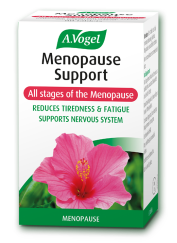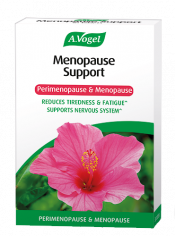Am I in the menopause?
This is our most frequent query and unfortunately there is no one thing that will indicate you are indeed in the menopause. Each woman will have a completely individual menopause. Some women will have few if any symptoms, whilst others will have what feels like them all! The average age for starting the menopause is 45-55 but some women do start earlier, especially if other close female relatives started young, and some women will start later.
Usually, one of the first signs will be a change in periods. They may get more frequent, heavier, get further apart and lighter or not appear at all. This phase is called the perimenopause and can last for a number of years before the periods stop for good...
Some women will continue to have regular periods which may either stop suddenly and never reappear whilst others may find that their periods become more erratic, stopping for a time and then starting again. Some women will start to experience other symptoms such as hot flushes, joint pain or low mood whilst still getting their periods – all very confusing!
So, as you can see, it is not a clear-cut issue! Your doctor can test your hormone levels and that may give you an idea of where you are, but it is not always accurate. Most women will just. have to be guided by their symptoms.
Do be aware that menopause-like symptoms can also indicate low iron, low thyroid and low vitamin D, so if any of your symptoms are persistent it is best to check with your doctor.
Hot flushes
The dreaded flushes! There are all manner of flushes. Again, there is no standard ‘one’. Some women experience head to toe flushes, others may just get a little glow and there are many combinations in between! Some women will get them very regularly, others may only get one when they are tired, upset or hungry etc. Basically, any feeling of hotness/heat that suddenly appears and then subsides is considered a hot flush. (although some women do get a warning of some kind such as palpitations or tingling.
They can be caused by all sorts of situations, not just the dipping hormones. Unfortunately, the lowering of hormone levels tends to weaken the body as a whole, especially the adrenal (nervous) system which means that there are many circumstances that can trigger a flush. Low blood sugar levels, stress of any kind, fatigue, dehydration, lack of sleep, worry – to name but a few – can all be contributory factors.
There are a number of things you can do to help with the flushes. A woman’s first choice is usually Sage tablets or tincture and many women find that taking a magnesium supplement helps as well. This is especially good if stress/anxiety is a trigger. Deep, slow breathing can often shorten the duration of a flush – don’t start to panic if you feel one coming on. Many women, especially in work or social situations, start to panic as they think everyone will notice them. This will only make it worse! A good tip is to look at yourself in a mirror when you get a flush and you will see that it doesn’t look half as bad as you imagine, so relax!
Dehydration and hunger can trigger flushes, so drink plenty of plain water (coffee, tea and fizzy juices don’t count!) and don’t skip meals. Don’t do any of these silly diets either. Eat well and have a little snack between meals to keep your blood sugar levels up.
Just remember, not everyone gets hot flushes or night sweats. They are not compulsory!
In part 2 I'm looking at three more common questions: periods, low mood and breast problems.








